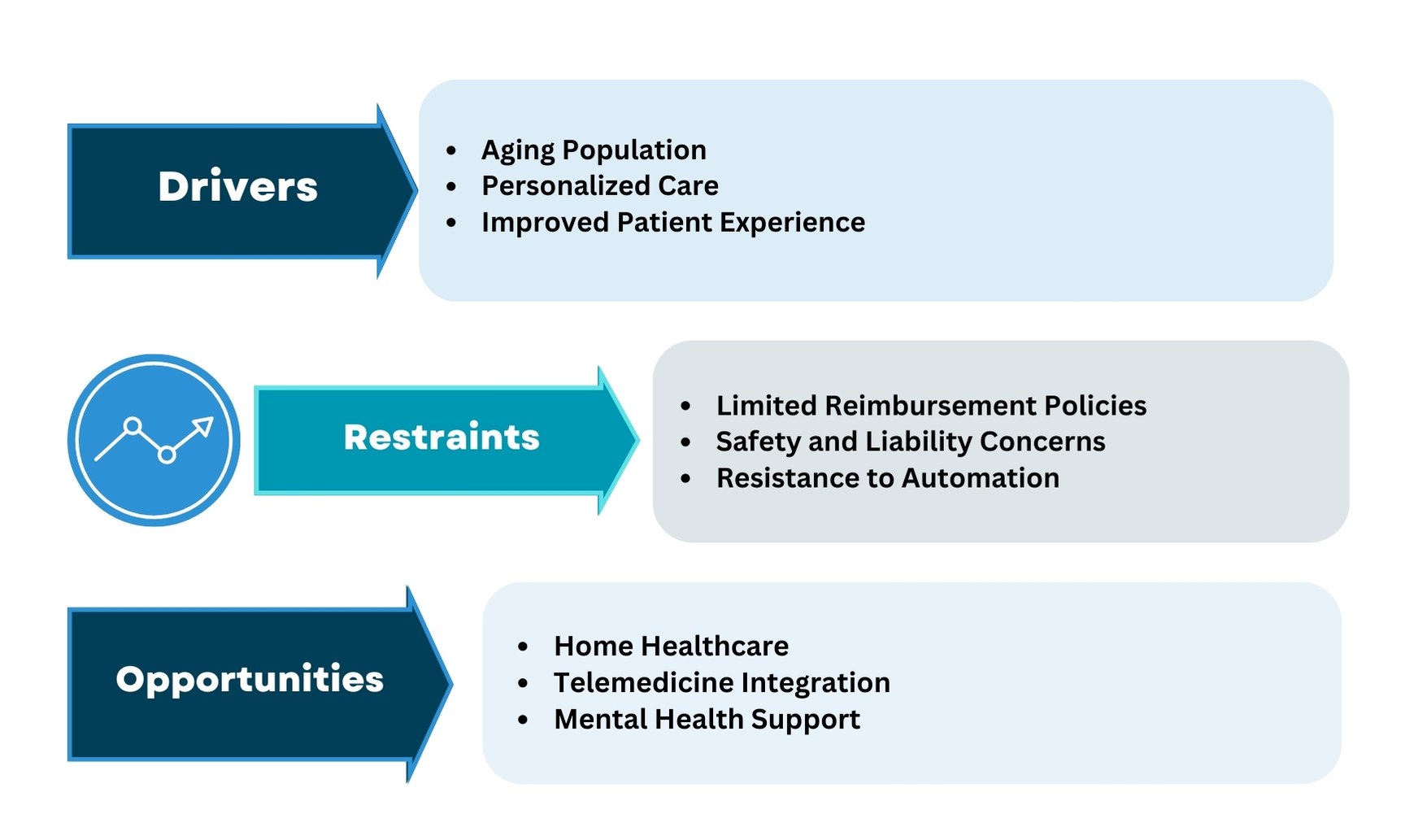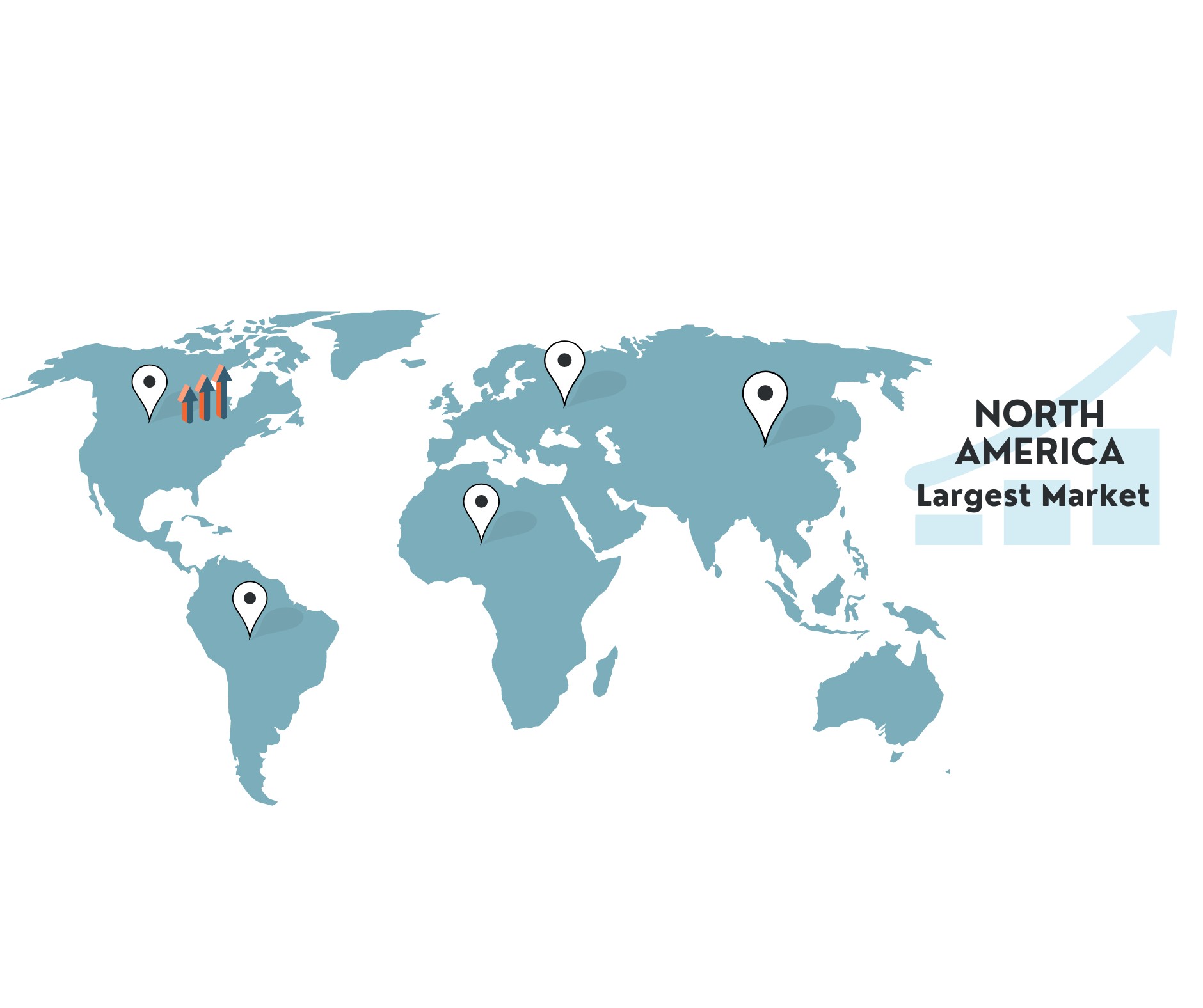Description
The Global Healthcare Companion Robots Market size was USD 1.76 billion in 2022 and it is expected to grow to USD 10.94 billion in 2030 with a CAGR of 17.68% in the 2023-2030 period.
Global Healthcare Companion Robots Market: Overview
The global healthcare companion robots market was a growing sector characterized by the integration of robotics and artificial intelligence in healthcare settings. Healthcare companion robots are designed to assist and support healthcare professionals in various tasks, improve patient care, and enhance the overall patient experience. These robots can monitor patients’ vital signs, movements, and activities, helping healthcare providers keep track of patient health and well-being. Companion robots can remind patients to take their medications at the appropriate times, reducing the risk of missed doses and medication errors. Robots can assist patients with mobility issues, helping them move within healthcare facilities or at home safely. Some companion robots are equipped with AI capabilities to provide emotional support to patients, particularly in scenarios where patients may feel lonely or isolated. Robots can engage in interactive conversations with patients, provide information, and entertain them through various multimedia features. Autonomous robots equipped with disinfection capabilities can help maintain a clean and sanitized environment in healthcare facilities. The global healthcare companion robots market was driven by factors such as an aging population, a growing need for personalized care, advancements in robotics and AI technologies, and the potential for improving healthcare efficiency and reducing costs.
Global Healthcare Companion Robots Market: Covid-19 Impact
The pandemic highlighted the importance of minimizing direct human contact to reduce the risk of virus transmission. As a result, there was an increased demand for healthcare companion robots to assist in patient care, monitor patients, and perform tasks that would otherwise require human involvement. With the surge in telemedicine and remote patient monitoring during the pandemic, companion robots played a vital role in bridging the gap between patients and healthcare providers. These robots enabled remote communication and monitoring of patients, especially those with chronic conditions or in isolation. The need for maintaining a clean and sanitized healthcare environment became paramount during the pandemic. Disinfection robots equipped with UV-C light or other disinfection methods were deployed to disinfect hospital rooms and high-touch surfaces effectively. Like many industries, the robotics sector faced supply chain disruptions due to lockdowns and restrictions. This led to delays in manufacturing and delivering healthcare companion robots. The fast-paced development and deployment of healthcare companion robots during the pandemic brought attention to regulatory considerations and potential challenges related to safety, data privacy, and ethical concerns.

Global Healthcare Companion Robots Market: Growth Drivers
-
Aging Population:
The world’s population is aging, leading to an increased demand for healthcare services. Companion robots can assist in providing care and support to the elderly, helping them with daily tasks, monitoring their health, and reducing the burden on healthcare professionals and caregivers.
-
Personalized Care:
Healthcare companion robots offer personalized care solutions by tailoring their interactions and services to individual patient needs. This level of customization can lead to improved patient outcomes and better overall healthcare experiences.
-
Shortage of Healthcare Workers:
Many regions are facing shortages of qualified healthcare workers. Healthcare companion robots can fill the gaps by performing non-invasive tasks, such as patient monitoring and medication reminders, allowing human healthcare professionals to focus on more complex and critical aspects of patient care.
-
Improved Patient Experience:
Companion robots contribute to a positive patient experience by providing companionship, emotional support, and entertainment. This can be especially beneficial for patients who may feel lonely or anxious during their hospital stays.
Global Healthcare Companion Robots Market: Restraining factors
-
Limited Reimbursement Policies:
In many healthcare systems, reimbursement policies may not adequately cover the costs of using healthcare companion robots. The lack of clear reimbursement pathways could hinder their widespread adoption, especially in countries with stringent healthcare reimbursement regulations.
-
Safety and Liability Concerns:
Healthcare companion robots operate in sensitive environments and interact with patients. Concerns related to safety, data privacy, and liability may arise if the robots malfunction or make errors that result in harm to patients.
-
Resistance to Automation:
Some healthcare professionals and patients may be skeptical or resistant to the idea of integrating robots into healthcare settings. Concerns about job displacement and the human touch in caregiving might lead to slower adoption rates.
Global Healthcare Companion Robots Market: Opportunity factors
-
Home Healthcare:
The rise of home healthcare services offered opportunities for healthcare companion robots to assist individuals with chronic conditions or disabilities in their own homes. Companion robots can help with medication reminders, daily tasks, and remote patient monitoring, enabling patients to age in place and receive personalized care.
-
Telemedicine Integration:
The increasing adoption of telemedicine during the COVID-19 pandemic created opportunities for companion robots to serve as virtual healthcare assistants. These robots can facilitate tele-health consultations, collect patient data, and provide remote care under the guidance of healthcare professionals.
-
Mental Health Support:
Healthcare companion robots equipped with AI and emotional recognition capabilities presented opportunities in mental health support. These robots can provide companionship, offer cognitive behavioural therapy exercises, and assist patients with anxiety and depression management.
-
Geriatric Care Facilities:
As the elderly population continues to grow, companion robots can play a significant role in geriatric care facilities, providing support and assistance to residents and helping healthcare staff manage their workload effectively.
Global Healthcare Companion Robots Market: Challenges
-
Limited Autonomy and Adaptability:
Healthcare companion robots may have limitations in autonomy and adaptability to complex and unpredictable healthcare scenarios. Overcoming these limitations to provide seamless and efficient support is a challenge for developers.
-
Seasonal Demand:
The demand for zero-turn mowers is often seasonal in regions with distinct seasons. The market may experience fluctuations in demand during the colder months when lawn mowing activity decreases.
-
Integration with Existing Healthcare Systems:
Integrating companion robots with existing healthcare infrastructure and electronic health records can be challenging due to compatibility issues and the need for seamless communication between different systems.
-
Ethical Considerations:
The use of healthcare companion robots raises ethical questions about the appropriate boundaries for robot involvement in patient care decisions, patient autonomy, and human-robot interactions.
Global Healthcare Companion Robots Market: Segmentation
- Based On Product Type: The market is segmented into Animal Like and Humaniod depending on the type segmentation. Among these humanoid companion robots dominates the market share due to increasing demand for these robots in medical procedures to keep children distracted and their use in autism special education.
- Based On Application: Based on application segmentation, the market is further divided into Children, The Aged, and Others.. Among these, the aged segments contributes a significant revenue to the market. Due to its ncreasing elderly population and the need for companionship and assistance.
- Based On Region: Based on Region, the market is segmented into five key geographical regions namely – North America, Europe, Asia Pacific, Latin America, and Middle East & Africa.

Global Healthcare Companion Robots Market: Regional Insights
North America, particularly the United States, was a significant market for healthcare companion robots. The region had a well-established healthcare infrastructure, a strong focus on technological innovation, and a growing elderly population, which drove the demand for companion robots in various healthcare settings. Europe also exhibited substantial growth in the healthcare companion robots market. Countries like Germany, the United Kingdom, and France were key contributors to the regional market. Europe’s aging population and initiatives to enhance healthcare services through technology supported the adoption of companion robots. The Asia-Pacific region showed considerable potential for the healthcare companion robots market. Countries like Japan, South Korea, and China were at the forefront of robotics and AI development. The region’s rapidly aging population and a growing awareness of the benefits of companion robots in healthcare contributed to market growth. The healthcare companion robots market in Latin America was gradually expanding, driven by an increasing focus on improving healthcare infrastructure and rising healthcare spending. Brazil and Mexico were among the countries showing promising growth prospects. The Middle East and Africa had relatively slower adoption of healthcare companion robots compared to other regions. Factors such as varying healthcare infrastructures, economic constraints, and regulatory challenges influenced the market’s growth in this region.
Global Healthcare Companion Robots Market: Competitive Analysis
The Global Healthcare Companion Robots Market is driven by various key players such as Blue Frog Robotics, inGen Dynamics, PARO Robots U.S., Inc., Intuition Robotics, Luvozo, Hanson Robotics, Ubtech, Aeolus Robotics.
Global Healthcare Companion Robots Market: Recent Developments
- Blue Frog Robotics: In June 2023, Blue Frog Robotics partnered with the French Ministry of National Education to deploy Buddy in schools. Buddy will be used to provide companionship and assistance to students with special needs, as well as to help students learn about STEM topics.


